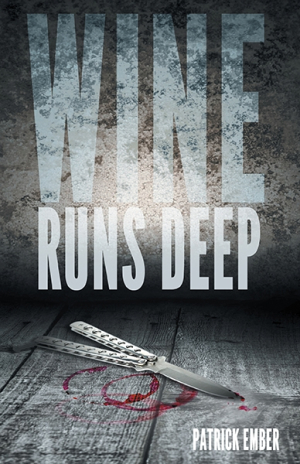Wine Runs Deep
The novel excels in its depiction of wine country and wine production. It’s set out in loving, exciting detail, with ample sensory elements.
Patrick Ember’s Wine Runs Deep is part heist caper, part romance, and part redemption tale. This ambitious story is set against the backdrop of California wine country.
Beckett left Montana right after high school, owing in part to a prank that escalated into a brawl, landing two of his high school buddies in jail. He rebuilt his life by starting a vineyard, Taboo. He loves good wine and knows how to create it. He layers on an affordable, competitive restaurant with simple, creative, and delicious food.
But then Al and Cale, the unlucky former friends he left back in Montana, turn up unexpectedly. They bring with them a third man, Keno. Al, ever the ringleader, believes that Beckett owes them—to the tune of a hundred grand—for their troubles, and he bullies Beckett into joining a plan for a big score. Beckett has even more to lose when he falls for Brook, a younger woman who works at a competing winery.
An interesting premise is undermined by an overreliance on exposition. A present-tense narrative announces most developments as they come, and immersion in the story is hard to achieve. Multiple tangents and unnecessary information within action scenes slow the pace and obscure the possibility of a satisfying resolution.
Al and Cale are one-dimensional ciphers, bad guys who are not otherwise unique. Their tactics are uninventive, and Beckett’s refusal to stand up to them makes him seem like a weak lead. An unnecessary trip to Las Vegas that is funded by Beckett to plan the heist slows the plot and doesn’t support extant characters; it also introduces a number of less central secondary characters whose various double- and triple-crosses muddy the story.
The action is forced into the plot, rather than organically moving the plot forward. Too many events lean on illogical turns.
In the end, it’s Keno, not Beckett, who moves toward redemption. Keno is the most fully rendered character in the novel. He experiences the most growth, and is both active and responsive to the shifting situations around him. Beckett is reduced to a secondary status, and though Keno’s shifts are interesting, Beckett’s persistent weakness in the story dilutes the eventual plot payoff.
The novel excels in its depiction of wine country and wine production. It’s set out in loving, exciting detail, with ample sensory elements. Scenes focused on that setting deepen and strengthen the story, and underline Beckett’s commitment to the life he’s built.
Wine Runs Deep is a heist novel with the wine, the vineyard, and the terroir as the stars.
Reviewed by
Eva Schegulla
Disclosure: This article is not an endorsement, but a review. The publisher of this book provided free copies of the book and paid a small fee to have their book reviewed by a professional reviewer. Foreword Reviews and Clarion Reviews make no guarantee that the publisher will receive a positive review. Foreword Magazine, Inc. is disclosing this in accordance with the Federal Trade Commission’s 16 CFR, Part 255.

